#database ethnography
Explore tagged Tumblr posts
Note
Hiiiii I'm curious if you know of like ANY writing on gender theory/transfeminism that touches on genderfluidity? Lately I only ever see it brought up as a "gotcha" when someone is trying to shut down how another blogger describes trans oppression. I'd love to know if there are/have been people who talk about genderfluid lives in a way that *furthers* the conversation not just to stop it in its tracks.
i don't and i wish i did!! i have a vague recollection of something in one of eli clare's books approaching genderfluidity from the perspective of, like, demedicalizing transition? some searching in the databases i have access to turn up essays called "Fucking the Binary for Social Change: Our Radically Queer Agenda" by avory faucette, and "Doing Gender Beyond the Binary: A Virtual Ethnography" by helana darwin both of which seem like they might be useful based on their abstracts but i can't do much better than that off the top of my head
3 notes
·
View notes
Text
Atlantis Expedition: Science Division Departments - Field Sciences Department
With the original post outlining the departments getting further away in the rearview mirror, as I've already finished the medical and life sciences departments, on to the field sciences.
Below are the original notes, with - tada! - no revisions:
Field Sciences Department
> Head: OC > Contains: Linguistics, historical geography, cartography, ethnography, sociology, oceanography, hydrology, atmospheric physics, planetary physics > Function: Research pool for gate teams and any assigned missions > Examples of function: Preservation of refugee cultures, scouting for trade planets, analysis of back-up sites for establishment > Personnel quantity: 1 (Head) + 3 (linguistics) + 1 (histgeo) + 1 (cart) + 1 (ethno) + 1 (socio) + 1 (oceano) + 1 (hydro) + 1 (atmophys) + 1 (planphys) = 12 > A/N: SGC duplicate all shoved into one department, mostly ignored in-house but their brains are picked for background dossiers when it comes to mission planning. Linguists trained in xenolinguistics, from the SGC, can cover the various anthro fields if necessary, also various training in structural linguistics. Main scientist pulls for gate team assignments, if something critical isn't needed (i.e. Ancient technology).
There's about three loose groupings here: the linguists, the anthropologists, and the non-anthropological scientists. The last of these are more pure science, so while they may do technical work, they're not engineering based, and thus well-suited to this department for a few reasons.
Here's the breakdown, commentary included:
> Linguistics » 3x of these » SGC imports ⇛ How many linguists to a Daniel Jackson » Specialties? ⇛ Linguistics Typology ⟹ Does the analytical work of structuring languages ⇛ Sociolinguistics/Linguistic Anthropology ⟹ Does the sociological work of relevance in languages ⇛ Computational Linguistics ⟹ Does the computer work to categorize languages ⟹ AKA Database creation ⇛ Outline of linguistics ⇛ Linguistics in science fiction > Historical Geography » Collects first-hand accounts, as well as reference material, to construct location data » Can contain work from botany and archaeology > Cartography » Uses GIS-type software for creating reference materials » Leverages historical geographer's work to make maps of different types > Ethnography » SGC import » Collates relevant information about found societies » Contributes to database work > Sociology » SGC import » Specialties? ⇛ Analytical sociology ⟹ Studies the mechanisms contributing to the creation of social facts ⇛ Sociocultural evolution ⟹ Studies how societies and cultures change over time ⇛ Outline of sociology > Oceanography » Assists cartographer in mapping oceanic and other water body areas > Hydrology » Analyzes water systems and their management » Assists historical geographer, ethnographer, and sociologist > Atmospheric Physics » AKA meteorology and climate physics » Assists everyone but linguists unless otherwise requested > Planetary Physics » Not astrophysics ⇛ Works with the astrophysicists » Studies composition of planets » Assists and leads oceanographer, hydrologist, and atmospheric physicist in research
Insert Daniel's caterwauling about not being allowed to go with the expedition. I imagine he was very grumpy in picking out some of his staff to go instead of him, but they are, at least, quite likely to be well-trained.
At any rate, these are the people that contribute to pre-mission dossiers, analyze data brought back from missions, and are the general group of people that might be pulled into gate missions themselves based on their expertise in various facets of culture and cultural analysis.
Given the fact that the Atlantis expedition was launched years after the SGC was formed, and also years after they ironed out the kinks in developing gate teams and mission parameters, the expedition has a bit of a leg up in terms of pre-populating their experts. Having Elizabeth Weir as the head of the expedition helps, as she had at one point been the head of the SGC, so had the opportunity to learn how the SGC runs, and why it makes the decisions it does.
Because of this, the Field Sciences department is going to be heavy on the SGC imports, and not just given a quick training on Goa'uld-adapted technology like the Medical and Life Sciences department would be.
The linguists are going to be doing a lot of the heavy lifting, and likely already know Ancient from the Milky Way extant samples the SGC was able to get from their own missions. (Do I think Ancient really is a Latin analogue? Nope, but narratively that's what it is.) After having been trained on Goa'uld as a lingua franca of the Milky Way, these people are going to be more specialized in being thrown feet-first into a new language group and learning it without any preexisting framework.
The anthropologists - geographer, cartographer, ethnographer, and sociologist - are going to be the ones to gather, analyze, and provide context for not only the languages the expedition and gate teams will encounter (such as dialects of Ancient and other common trading languages in the Pegasus galaxy), but also to record and articulate historical and contemporary information of the peoples the expedition meets. This is useful for not only establishing back-up installations (i.e. alpha site, beta site, etc), but also for assisting in refugee work and tracking population migrations that they'll eventually figure out is caused by Wraith cullings.
The pure sciences do what pure sciences do: collect information. While linguists may find a group of people with fifty words for different shades of green, pure scientists will track down what those words are used for (i.e. locating different types of forests). They'll work closely with the Life Sciences department, in case a botanist needs to find a particular plant, or a zoologist needs to find a particular animal, by cross-referencing geographical data and likely working in concert with the local societies that provided them with that information.
Of all departments, it's the Field Sciences department that people like Teyla and Ronon will be most likely to interact with on a regular basis, given their roles of cultural experts and cultural liaisons.
Total Field Sciences Department Personnel
Head of Department: 1
Linguists: 3
Anthropologists: 4
Pure Sciences: 4
Total total: 12
Any canonical characters that happen to fit the bill of a role in this department will have their own post, but for now this is a general accounting of the expedition's field sciences department.
4 notes
·
View notes
Text
Cultural Autism Studies at Yale (CASY, ethnography project led by Dr. Dawn Prince-Hughes) is delighted to welcome Dr. Robert Rozema on Friday, April 25 at 3-4 p.m. EDT (12-1 p.m. PDT). There is no cost to attend, and international participants are welcome. For this and future events, RSVP by joining our FREE Meetup group online at https://tinyurl.com/y4hfsw6r
TITLE: 𝘖𝘶𝘨𝘩𝘵: 𝘛𝘩𝘦 𝘑𝘰𝘶𝘳𝘯𝘢𝘭 𝘰𝘧 𝘈𝘶𝘵𝘪𝘴𝘵𝘪𝘤 𝘊𝘶𝘭𝘵𝘶𝘳𝘦
DESCRIPTION: 𝘖𝘶𝘨𝘩𝘵: 𝘛𝘩𝘦 𝘑𝘰𝘶𝘳𝘯𝘢𝘭 𝘰𝘧 𝘈𝘶𝘵𝘪𝘴𝘵𝘪𝘤 𝘊𝘶𝘭𝘵𝘶𝘳𝘦 is an open-access, peer-reviewed journal that examines and documents autistic culture. Founded by Robert Rozema, Ph.D. in 2019, the journal features academic writing and creative works by autistic and autistic-adjacent individuals. In this session, Dr. Rozema offers a brief history of the journal, highlights exemplary contributions illustrating its scope and mission, and explains how the journal fits into the emerging discipline of Critical Autism Studies.
BRIEF BIO: Robert Rozema, Ph.D. is a neurotypical English professor at Grand Valley State University, where he teaches courses in English education, literature, comics, and digital studies. He is the founder of 𝘖𝘶𝘨𝘩𝘵 (http://scholarworks.gvsu.edu/ought) and the Autistic Representation Database (http://autrep.org).
ABOUT Cultural Autism Studies at Yale (CASY): An 'ethnography' is an exploration of how a group of people express themselves in a cultural way. Autistic people have a growing kind of culture, and each autistic experience is a vital part of it. Dr. Dawn Prince-Hughes is an anthropologist, ethnographer, primatologist, and author who is autistic. Join her for an exploration of the importance of autistic self-expression and the culture that grows from it. Those who wish to share their content are free to do so on our private Facebook groups (see below), organically contributing to a growing autistic culture.
Links to online events will also be shared on these private Facebook groups: CASY Cultural Autism Studies at Yale http://tinyurl.com/4ckbyut7 (recommended for autistic adults) and SOCIAL CONNECTIVITY FOR AUTISM http://tinyurl.com/mrxnxmnc (recommended for allies, professionals, and family members).
CREDITS: The preparation of this material was financed under an agreement with the Connecticut Council on Developmental Disabilities (CTCDD). CASY Sparks membership and events are free. CASY Sparks is sponsored in part by The Daniel Jordan Fiddle Foundation Adult Autism Research Fund and Dr. Roger Jou https://www.youtube.com/c/DrRogerJou

0 notes
Text
Databases
Bloomsbury Fashion Central. Bloomsbury Publishing. https://www.bloomsburyfashioncentral.com/
Fashion Studies Online. Ethnographic Video Online Vols. I & II: Foundational Films. https://video-alexanderstreet-com.eu1.proxy.openathens.net/channel/ethnographic-video-online-foundational-films
Database: Bloomsbury Fashion Central.
This database is a number of collection within one database al centering around fashion and dress. The contents include "interconnected major reference works, exclusive articles, scholarly books, case studies, biographies, lesson plans, bibliographic guides, textbooks, video content, runway and backstage photos from fashion shows, and tens of thousands of images from museums " (Bloomsbury Fashion Central). This will be the best database to look into historical embroidery, it should give us articles, historical accounts, and a variety of images to draw from to further our research and knowledge. This database is helpful to the auidence of researchers as fashion is so wide and broad yet often lacking in other databases, who focus on the sciences more than the arts or this particular aspect of history. This also allows for recreators to better achieve the true historical look.
There is a basic and advanced search function. There are additional limits, and facet searching available on this database as well. The database covers ancient to modern and is updated regularly. The content is primarily index and abstracted, but has an option to find the full resource within your local library if they offer it. Peer reviewed articles are available. There are mechanisms to sort by format, date, relevance, and further sorting related to fashion such as place of origin or techniques used. There is a function to save, share, and print articles/ media found. There is also a way to form an account.
Database: Fashion Studies Online
"A core resource for anthropology courses of all levels, this two-volume collection contains classic and contemporary ethnographies, documentaries and shorts from every continent, providing teachers visual support to introduce and contextualize hundreds of cultural groups and practices around the world." (Alexander Street). For those that want a video format for your research this will be a helpful database for you as it contains a multitude of videos on different ethnic cultures which will give insight into a researcher's goal. For the costumer this means getting the background context of the culture or in some instances seeing the technique be done.
There are only 26 videos within their current collection for ethnographies, but feature a filtering feature none the less. The greater resource has a large a larger search function that one may be able to use to find something more specific, such as searching Traditional fashion and filtering to anthropology to get a number of news coverings and documentaries. The database as a whole covers from about 1960 to now and is regularly updated. There are mechanisms to sort by format, date, and relevance.
1 note
·
View note
Text
research is often used when the research question requires an in-depth understanding of the context, meaning, and complexity of a phenomenon. Qualitative research methods can include interviews, focus groups, ethnography, and case studies.
0 notes
Text
Re-imagining Canada’s energy data
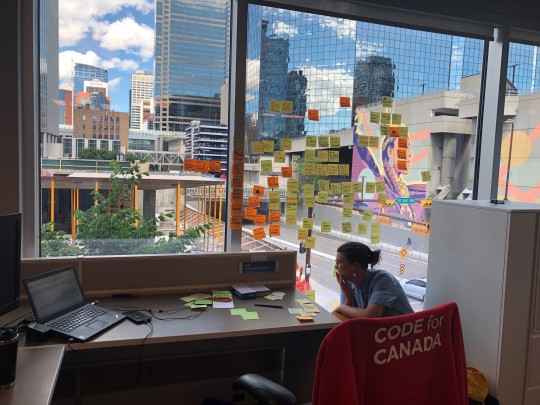
From board meetings to infinity mapping, as Code for Canada fellows, we’ve just firehosed through our first week at the National Energy Board--soon to be the Canadian Energy Regulator.
We’ve found new ways of thinking and talking about energy data. Starting with pipeline cleaners as pipeline rhumbas to gamefully engaging board members as human libraries while we assumed roles of the public--farmer, student, scientist, and more. Historically, we have viewed energy regulation as a legal experience filled with lawyers, hearings, and community groups advocating for their rights within a legal process. But many others, like the aforementioned roles, would benefit from meaningfully engaging with this information on the environment, land rights, and renewable energy that only this Board has access to.
What will this digital transformation look like? We have a plethora of ideas, but we don’t know yet. Right now we are embracing the gray area of discovery, learning from our mistakes, being mindful about our scope of work, and slowly growing our digital government skills. As we discover and navigate what’s possible in this blue sky, while refusing to let folks rain on our parade, or rather, Calgary Stampede, we’ll soon find out. We invite you to come along for the (horse) ride!
Lequanne, on behalf of the fellows
___________
Des réunions du conseil à la cartographie à l’infini, en tant que boursiers du Code pour le Canada, nous venons tout juste de briller dans notre première semaine à l’Office national de l’énergie - qui sera bientôt l’organisme canadien de réglementation de l’énergie.
Nous avons trouvé de nouvelles façons de penser et de parler des données énergétiques. Commençons par les nettoyeurs de pipelines en tant que rhumbas de pipeline, puis les membres du conseil d’administration en tant que bibliothèques humaines, tandis que nous assumons les rôles d’agriculteur public - étudiant, scientifique, etc. Historiquement, nous avons considéré la réglementation de l'énergie comme une expérience juridique remplie d'avocats, d'audiences et de groupes communautaires défendant leurs droits dans le cadre d'une procédure judiciaire. Mais beaucoup d’autres, à l’instar des rôles susmentionnés, gagneraient à s’intéresser de manière significative à ces informations sur l’environnement, les droits fonciers et les énergies renouvelables, auxquelles seul ce Conseil a accès.
À quoi ressemblera cette transformation numérique? Nous avons une pléthore d’idées, mais nous ne le savons pas encore. Pour le moment, nous abordons la zone grise de la découverte, tirons les leçons de nos erreurs, sommes conscients de notre champ de travail et développons lentement nos compétences en matière de gouvernement numérique. Au fur et à mesure que nous découvrons et naviguons dans ce ciel bleu, tout en refusant de laisser les gens pleuvoir sur notre défilé, ou plutôt dans le Stampede de Calgary, nous le saurons bientôt. Nous vous invitons à venir faire un tour à cheval!
Lequanne, au nom des boursiers
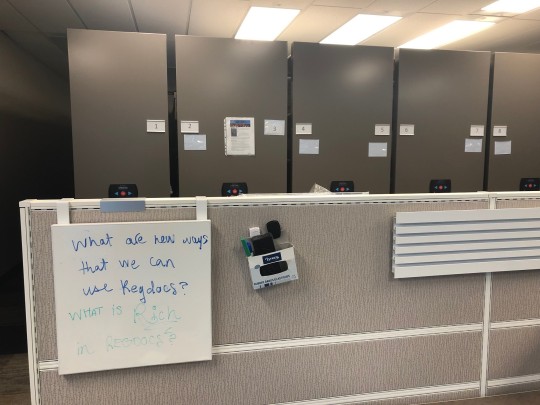
#digital government#civictech#codeforcanada#codefor#digital#energy#energy data#open data#open government#open#database ethnography#ethnography#database#open calgary#open canada#canada#canadian history
3 notes
·
View notes
Text
Your mom is a tech ninja

What makes someone “good at technology?” In part, it’s an understanding of the underlying technical principles and industry conventions — what a “power on” icon looks like, say. I have a lot of that. But there’s another component, one that’s often invisible to people like me: the extent to which your technology was designed to suit your needs.
I have a lot of that, too. I’m a 50 year old, middle-class, tech-industry adjacent professional man with an honorary PhD in computer science. Not only do tech designers think like and about me when they create new products — they often ask me what I think I need.
Several times per year, I’ll get on a call with product managers and researchers at both big and small tech companies to discuss some planned product. I am good at tech, but tech is also good at me. It doesn’t just meet me halfway — it bends over backwards to meet my needs.
Some years ago, I joined the advisory board for Simply Secure, a nonprofit that helps tech designers build strong security tools that are intended to be usable by non-technical people.
https://simplysecure.org/
In my first call with the org’s founder, Meredith Whittaker, I suggested a slogan for the products we helped with: “So easy, even your boss can use them.” You see, I’ve been an IT manager, and in that rule, I’ve had to institute security policies, like minimum standards for passwords, mandatory VPN usage, and other important (but often cumbersome) measures.
In these circumstances, I always did my best to explain to my co-workers that these measures were not me being high-handed or sadistic, loading them up with pointless busywork. I tried really hard — with pretty good success — to convey the rationale behind these measures and the risk I was trying to mitigate.
This isn’t just a matter of being respectful to the people I was working to protect, it was also key to that protection — when people don’t accept security measures, they circumvent them. As this amazing ethnography of security-bypassing medical professionals puts it, “You Want My Password or a Dead Patient?”
https://www.cs.dartmouth.edu/~sws/pubs/ksbk15-draft.pdf
It’s really important to get rank-and-file workers to understand why you’re asking them to endure the inconvenience of a security measure, but it’s far more important to get your boss to understand this. After all, even if your co-workers don’t buy in, you have some authority to mandate their cooperation, whereas your boss gets to override you.
Everyone who’s worked in security has had experience with this: you get a call from the CEO like, “Look, Poindexter, I don’t give a monkey’s asshole about the VPN or whatever. I need to download a presentation to raise the capital to pay your salary, and as soon as the kid in the lobby of this Comfort Inn is done Reddit shitposting on the shared lobby iMac, I need to download that file to this USB stick I found in the parking lot of an Arby’s and transfer it to my laptop. Make it happen!”
This is why I suggested “So easy your boss can use it,” as a replacement for the odious “So easy your mom can use it.” Bosses have the social clout to force the universe to rearrange itself to your comfort.
Moms, not so much.
Tech designers are notoriously indifferent to the needs of moms — and other marginalized users — when they plan their products. The emblem of this was the Honeywell Kitchen Computer, a $10,600 recipe-organzing database system the size of a kitchen counter, offered for sale in the 1969 Nieman-Marcus Christmas catalog:
https://www.wired.com/2012/11/kitchen-computer/
The men who designed this computer didn’t ask their wives — whose nightly dinner-cooking duties they set out to automate — whether they needed a $10,000, 100lb recipe organizer that you queried by punched paper tape. Not one unit sold.
Everything your mom does with a computer is twice as hard as the things that I do with a computer. Even if your mom gets more consideration from product designers today than she did in 1969, I’m getting more consideration. When I use a computer, I’m playing the game of life on the lowest difficulty setting:
https://whatever.scalzi.com/2022/05/18/straight-white-male-the-lowest-difficulty-setting-ten-years-on/
But as easy as things are for me, they’re even easier for your boss, who doesn’t just play on the lowest setting — your boss gets to play in God Mode. They get highest-level access to company systems and they get to ignore the security policies their underlings must obey.
Hence IFL Science’s study of CEO passwords for Nordpass, which found that the median CEO uses a password that is “startlingly dumb,” in the phraseology of the headline for PC Gamer’s article on the study, by Katie Wickens:
https://www.pcgamer.com/the-passwords-most-used-by-ceos-are-startlingly-dumb/
The study analyzed 290 million data-breaches and clustered the leaked passwords by job title, finding that the most popular passwords for the highest-ranking employees were typical of the worst password choices: “123456,” “picture1,” “password,” and names like “Tiffany,” as well as mythological animals like “Dragon.”
These passwords aren’t worse than the median breached password, but they should be better. With great power comes great responsibility, after all. C-Suite Impersonations are extremely dangerous to companies — forged emails from top execs have led to millions of losses at a swoop, when the impersonator orders an underling to transfer millions to pay a bogus invoice.
https://www.batesgroup.com/publications/joic-02-2017-0001.pdf
It’s a safe bet that the IT managers who work for these execs know about the risk of C-Suite account takeovers, and it’s a sure bet that the execs who chose these bad passwords had heard advice about choosing strong passwords. But unlike your mom, your boss gets to overrule IT policies.
Passwords suck and they’re hard to do well. You (and your mom, and your boss) should be using a password manager and using a different, strong, randomly generated password for every service.
https://www.eff.org/dice
You should also turn on two-factor authentication for every service, using either a hardware token or a standalone 2FA app (not SMS!):
https://ssd.eff.org/en/module/how-enable-two-factor-authentication
Meanwhile, let’s normalize saying, “So easy my boss can use it” and banish “so easy my mom can use it” to the scrapheap of history.
[Image ID: The 1969 Nieman-Marcus Christmas Catalog listing for the Honeywell Kitchen Computer. The ad copy reads, 'If she can only cook as well as Honeywell can compute. Her souffles are supreme, her meal planning a challenge? She's what the Honeywell people had in mind when they devised our Kitchen Computer. She'll learn to program it with a cross-reference to her favorite recipes by N-M's own Helen Corbitt. Then by simply pushing a few buttons obtain a complete menu organized around the entree. And if she pales at reckoning her lunch tab, she can program it to balance the family checkbook. 84A 10,600.00 complete with two week programming course 84B Fed with Corbitt data: the original Helen Corbitt cook-book with over 1,000 recipes 5.00 (.75) 84C Her Potluck, 375 of our famed Zodiac restaurant's best kept secret recipes 3.95 (.75) Epicure 84D Her tabard apron. one-size, ours alone by Garden House in multi-pastel provincial cotton 28.00 (.90) Trophy Room.]
32 notes
·
View notes
Text
working on obey me fic and my research at the same time is wild because my tabs look like
[endnote] [ethnography of infrastructure.pdf] [the levels of hell] [miro - phd subquestions] [docs: trueforms awooga 💦] [mechanisms framework] [cool daggers] [library search] [lovecraftian rituals] [database search]
20 notes
·
View notes
Text
About VN Karazin Kharkiv National University
VN Karazin Kharkiv National University With a history of more than 210 years, Kharkiv National University (Karazin University) is a leading research and educational institution in Ukraine. In the UNESCO Chair's "Ukraine Top 200" ranking in 2016, Kharkiv University ranks third among all universities in Ukraine. According to Scopus, the world's largest database of abstracts and citations, the university ranks third among educational and research institutions in Ukraine for the number of articles published in major international scientific publications.
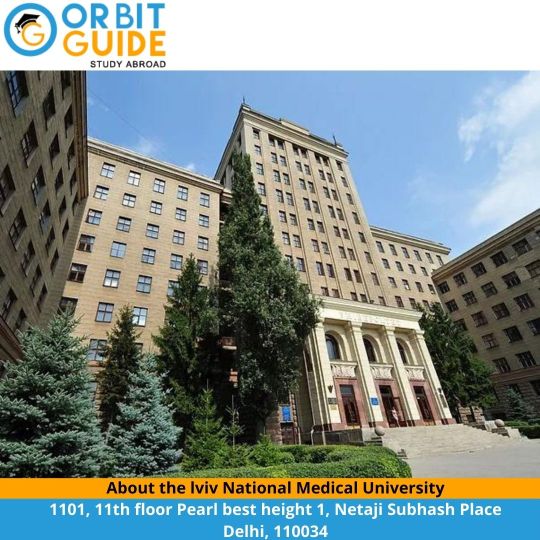
Today the university has 21 schools and 124 departments that train professionals in 61 professions. The university also includes 3 research institutes (for astronomy, biology, and chemistry), a central scientific library with over 3.5 million books, botanical gardens, the university's historical museum, natural history museum, archaeological museum, and ethnography. All colleges, international student training centers, and pre-enrollment training centers offer classes for 15,000 undergraduate and 500 graduate students. The university employs 308 doctors of sciences and doctors of literature, full professors, and about 800 doctors, associate professors, including 15 scientists and relevant members of the National Academy of Sciences of Ukraine and sector academies, in teaching and research.
The university is characterized by its 24 internationally recognized scientific faculties and the largest capacity and largest base for training highly qualified personnel on the left bank of Ukraine. The university has more than 20 subject examination committees and senior experts, which annually defend 10 to 15 dissertations and about 60 dissertations. Every year university scholars publish more than 60 textbooks and 300 handbooks, about 60 monographs and over 80 issues of university bulletins and other journals, about 2,500 scientific articles and abstracts, including over 400 articles in major international scientific journals. . Every year the university organizes more than 150 national and international conferences on research and teaching methods.
The university promotes diverse, close and fruitful cooperation with the research institutes of the National Academy of Sciences and the field academies of Ukraine, continuing to build and strengthen contacts with regional research institutes and companies. Within the research institutes of the National Academy of Sciences of Ukraine, 17 departments of university departments were created. In collaboration with the National Academy of Sciences of Ukraine, the university inaugurated the Faculty of Physics and Energy.
The university has wide international recognition as one of the sponsors of the signing of the Magna Charta Universum (Bologna, 1998), a co-founder of the Association of Eurasian Universities, an active participant of the International Association of Universities and the Association of European Universities, a nearly 1,500 International students, training centers for Ph.D. and Ph.D. students from 50 countries around the world, and partners in research and education collaborations with over 100 universities and other organizations worldwide.
Click to know more about study MBBS Abroad, visit our website Orbit Guide.
#best mbbs consultant#best mbbs abroad college#mbbs in kiev#best mbbs abroad consultancy#top mbbs abroad consultant#top mbbs abroad destination#mbbs from abroad#mbbs in abroad#study mbbs abroad
14 notes
·
View notes
Text
Dignity Of Memory
After almost 30 years since the break-up of Yugoslavia, we can take a stroll through a part of the architectural history with the benefit of distance.
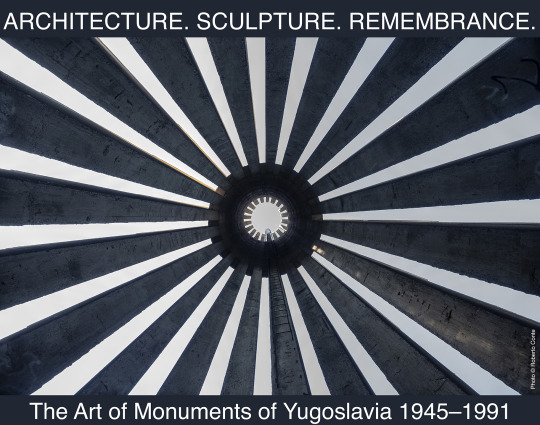
The heritage of Yugoslav architecture was taken on almost a decade ago by Croatian Architects Association in collaboration with Maribor Art Gallery with the regionally conceived project Unfinished Modernisations – Between Utopia and Pragmatism – Architecture and Urban Planning in the Former Yugoslavia and the Successor States, and last year with the global exhibition in New York City's MoMA Toward a Concrete Utopia: Architecture in Yugoslavia, 1948–1980.
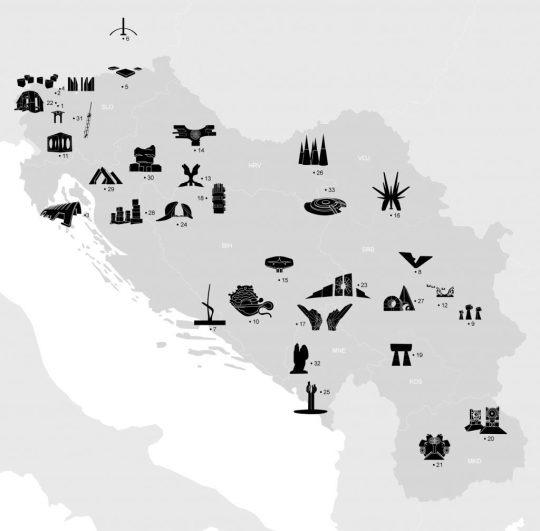
In the architecture and art of ex-Yugoslavia, the monuments to the victims of the People's Liberation War stand out. Through their artistic language, they remind us of the dignity of human life and death. They are powerful markers of the once-common state's public open space. Their unique architectural and artistic design has placed them on a field of timelessness, which is not constrained by geographic and cultural borders, age, race, or political views.
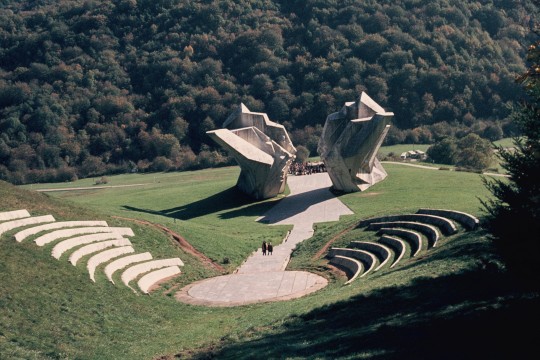
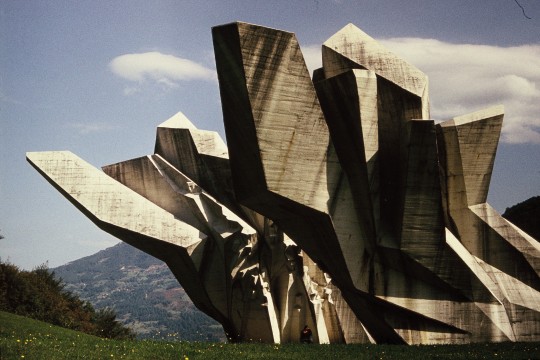
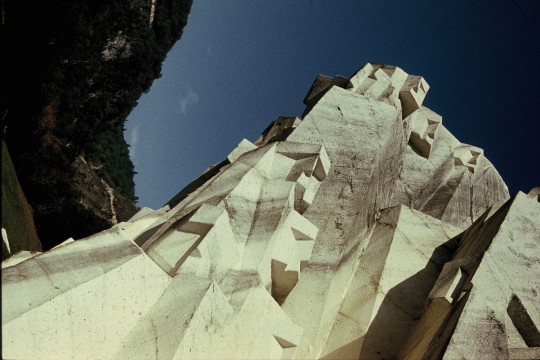
Memorial complex to the Battle of Sutjeska is an exceptional work by Miodrag Živković and one of the best sculptural memorials in the Yugoslav space. | Photo from the archive of Miodrag Živković
Monuments were built and designed by Yugoslav architects and sculptors of the highest profile, such as Bogdan Bogdanović, Edvard Ravnikar, Miodrag Živković, Dušan Džamonja and many others. Instead of the regime's symbolism, their creations combined the present, the past, the elements of antique necropolises, ethnography and spatial poetics.
youtube
Last and First Men by Johann Johannsson (2020) narrated by Tilda Swinton
The monuments are predominantly designed as sculptural-architectural structures, abstract architectural sculptures. Many were constructed in concrete, which was elevated to the status of noble material by virtue of shaping and finishing. They are sited in authentic spatial situations and historical settings, designed as a commemorative path. Every monument tells a story connected with the events and victims.
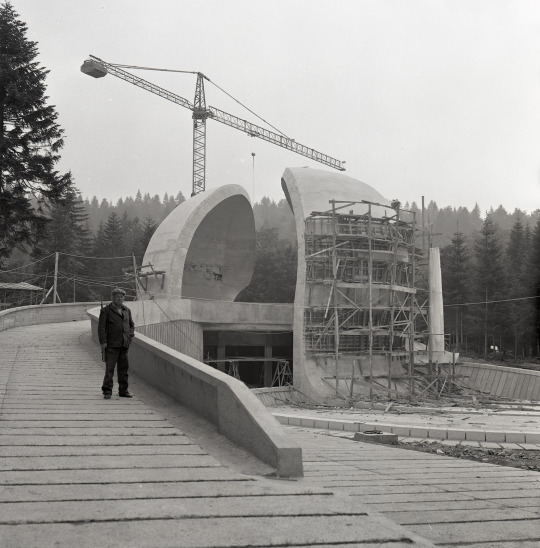
Memorial complex Korčanica is dedicated to the largest Partisan hospital, which was active in the liberated territory of the slopes of Grmeč between 1942 and 1943. | Photo from the archive of Miodrag Živković
In mid-march 2019, Gallery DESSA, ab-Architect's Bulletin magazine and Architectuul began the preparations for the exhibition and publication named Architecture. Sculpture. Remembrance.; The Art of Monuments of Yugoslavia 1945–1991. On the basis of high architectural and artistic value of the structures and the exceptional contemplative qualities of the spatial designs, the curators selected 33 monuments and memorial complexes from all the republics and autonomous provinces of ex-Yugoslavia. The exhibition was prepared in collaboration with authors, photographers, institutions from the ex-Yugoslav region, which has also laid the foundation for future co-operation. The exhibition will present and evaluate the exceptional architecture of the Yugoslav monuments, whose aesthetic and structural innovation is enhanced by their idiosyncratic artistic expression.

The memorial complex Kadinjača by is dedicated to the Partisan fighters of Workers' Battalion of Užice. | Photo from the archive of Miodrag Živković
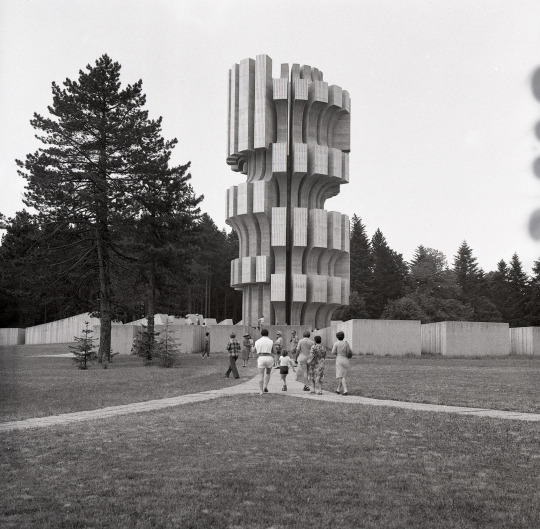
Monument to the Revolution by Dušan Džamonja is located at the highest peaks of Kozara mountain. | Photo from the archive of Miodrag Živković
Monuments are also political art, they are an uncompromising tribute to humanity, to reverence towards the victims, conveyed by means of the authors' individual artistic expression. With the dissolution of Yugoslavia into individual independent states in 1991, it seems that the need for respecting the remembrance expressed by its memorials is waning. As a result, the present state of repair of the monuments and their treatment varies depending on the region. In some places, the past and the strivings of the previous generations are held in respectful memory while elsewhere, the monuments have been abandoned, left to ruin, or even desecrated.
youtube
“Beck’s Legendary - Croatia Infiltration” is a beer commercial, which exploits the Monument of Petrova Gora.
Due to their abstract nature, they may be used for very different purposes, such as shooting TV advertisements and music videos, or as fashion runways. Such use of monuments by individuals who have no appreciation or knowledge of the past and therefore cannot respect it represents misuse as well as contempt for the dignity of the victims and their memory.
youtube
The exhibition is planned to be shown in all the former Yugoslav republics. We wish to foster a sober and respectful assessment of the value of ex-Yugoslav monuments and draw attention to their cultural and contemplative significance, and thus lend support to the maintenance and preservation of the memorial areas. It will present the exceptional, progressive, and still-contemporary creative language of their artists and other creators, which transcends the superficiality of the quest for the different, the exotic, the picturesque, and the unknown. Monuments are ties to the past, they reminiscent of the dignity of human life and death. And remembrance.
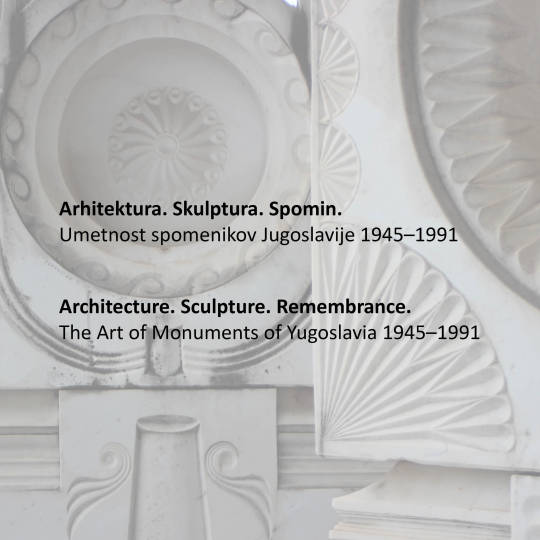
The exhibition started to travel to different cities of the territory of Ex-Yugoslavia. Because of COVID-19 restrictions the project continues online. The next stop is co-hosted by the creative community Avtomatik Delovišče under the auspices of the Municipality of Koper. Together with Architectuul 33 monuments will be presented daily with a conclusion online webinar on 29. November 2020.
---
Architecture. Sculpture. Memory. The art of monuments of Yugoslavia 1945–1991 online webinar 29 November 2020
Dessa, AB, Avtomatik Delovišče Curators Boštjan Bugarič, Kristina Dešman, Maja Ivanič, Špela Kuhar, Eva Mavsar, Špela Nardoni Kovač, Damjana Zaviršek Hudnik Media partner Architectuul
*********** Program
10:00 Introduction Christian Burkhard, editor in Chief Architectuul, Berlin Boštjan Bugarič, senior editor Architectuul, Berlin Mara Ivanič, Dessa Gallery, Ljubljana
youtube
10:20 Spaces and Dignity Sanja Horvatinčić, Institute of Art History, Croatia Vladimir Deskov, School of architecture and design - UACS, N. Macedonia Ana Ivanovska, Faculty of Architecture Skopje, North Macedonia Kristina Dešman, Maja Ivanič, Špela Kuhar, Eva Mavsar, Špela Nardoni Kovač, Damjana Zaviršek Hudnik, DESSA Gallery, Slovenia Jelica Jovanović, Grupa arhitekata / Docomomo Serbia Boris Trapara, Bosnia and Herzegovina Bekim Ramku, Docomomo Kosovo Slavica Vučković, Faculty of Architecture Podgorica, Montenegro Moderator: Boštjan Bugarič
11:00 Yugoslavia Express Roberto Conte presenting the field photo trip
11:30 Presentation and Dignity Roberto Conte, Italy Relja Ivanić, Serbia Matija Kralj, Croatia Elena Chemerska, North Macedonia Donald Niebyl, Spomenik Database USA Andrew Lawler, Spomenici NOB, Serbia Moderator: Kristina Dešman
12:00 Embodied Experiences: Investigating the relation between architecture, landscape and symbolism in WW2 monuments of socialist Yugoslavia; a master thesis by Vida Rucli, Faculty of Architecture in Ljubljana, menthors Maruša Zorec and Luka Skansi
12:30 Culture Routes in Montenegro Slavica Vučković presenting the project
13:00 (In)appropriate Monuments: Interview with Miodrag Živković In loving memory of Miodrag Živković by Jelica Jovanović
youtube
62 notes
·
View notes
Text
im rly excited for research!!! im considering doing a participant observation at a kpop party for my ethnography course bc of how unique the behaviour of ppl there is compared to other parties (i.e. ppl start doing choreographies together on the dance floor) and for my bachelor thesis im gonna do a research on dutch people and their views on / experiences with etsy (e.g. how etsy is viewed by non-users, how etsy sellers view the role of etsy in their craftsmanship etc.) and i got contacted on instagram by an account that promotes dutch etsy sellers as a collective and they have a large database which i can make use of! so im very stoked but also a bit stressed bc i need to finish my introduction today so i can move onto continuing my policy proposal tomorrow.
#research is fun but i just rly suck at reading and deadlines!!!!!!!!!#rambles#school stuff#positive tag
3 notes
·
View notes
Text
#1yrago Automating Inequality: using algorithms to create a modern "digital poor-house"
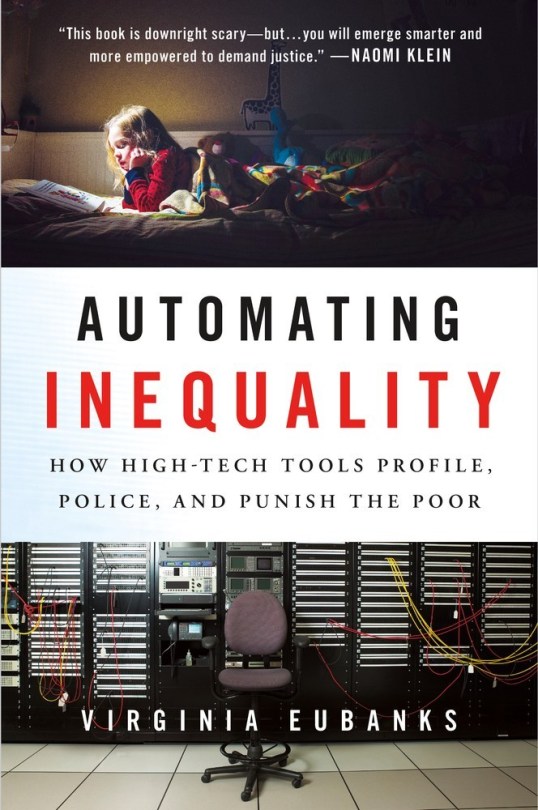
Weeks before the publication of Virginia Eubanks's new book Automating Inequality: How High-Tech Tools Profile, Police, and Punish the Poor, knowledgeable friends were already urging me to read it, which was a no-brainer, having followed Eubanks's work for years.
Eubanks's work is a combination of technical analysis, ethical argument and thick, richly described ethnography, and it uses three different algorithmic systems to show how the false empiricism of service delivery through computerized triage and prediction is a means to harm, marginalize, and even kill the poorest among us.
Eubanks's first testbed for this brand of algorithmic cruelty are the Indiana benefits system, where a collaboration between an ideology-driven Republican state government and an overpromising, underdelivering IBM resulted in a shambles that cost the poorest Hoosiers food security, housing, medical care -- even their lives.
Next is Los Angeles's "no wrong door" approach to extending benefits to people living on the city's notorious Skid Row, a seemingly intractable tent-city that is a stain on the city's conscience, where quirks of the scoring system means that some of the most desperate, at-risk people are denied benefits, stuck in a catch-22 where (for example) being imprisoned can make you score as lower-risk because you had been housed recently.
Finally, there's the Allegheny child protective services system, whose dual mission of providing services to families and taking away children from families that neglect their children places the poorest people in one of America's poorest places in constant danger of having their children snatched from them, and where the children of parents who have attracted even anonymous and unsubstantiated complaints are at risk of having their children taken away a generation later, because growing up in a high-risk household puts you at high risk.
Eubanks's ability to combine beautiful biographic storytelling with keen observation and criticism makes this an indispensable addition to the literature on what Cathy O'Neil calls Weapons of Math Destruction.
For example, in a description of the use of algorithms to conduct surveillance to fight crime, she points out that in the traditional model of policing, the cops would find some reason to suspect someone, and then put them under surveillance; the data-driven approach is to put whole populations under surveillance, and then decide who is suspicious. This has enormous implications for social justice: if the reason to replace the old system is the racial bias of cops or other human frailties, then consider what happens if those same biases are reflected in the decisions of whom to surveil (poor people are more likely to find their lives under database scrutiny than wealthy people -- for example, if you have a high-waged job you will never be considered in an algorithmic sweep of food-stamps records looking for potential fraud) and what constitutes suspicious behavior.
A recurring theme in Eubanks's work is the power of algorithms to diffuse responsibility for human suffering: using math to decide who the "deserving" poor are makes it easier to turn away from everyone else whom the system has deemed undeserving. The history of poor peoples' rights is one of popular uprisings coupled with sympathy from wealthier people, often driven by stories of mediagenic people being harmed by the system -- the middle class is more apt to demand systemic overhaul when a small child or a sweet pensioner dies then when the system mostly kills racialized men with drug addictions. By using algorithms to "triage" the neediness of poor people, system designers can ensure that the people harmed by the system are the least sympathetic and least likely to provoke outrage among those with political clout.
Algorithmically defined guilt is also a problem because of the real problems agencies are trying to solve. In Allegheny, your child's at-risk score is largely defined by your use of social services to deal with financial crises, health crises, addiction and mental health problems. If you deal with these problems privately -- by borrowing from relatives or getting private addiction treatment -- you aren't entered into the system, which means that if these factors are indeed predictors of risk to children, then the children of rich people are being systematically denied interventions by the same system that is over-policing poor children.
Eubanks closes her book with some practical advice for improving the fairness of algorithms in public service. She advises that systems designers should guide their practice by asking themselves two questions.
1. Does the tool increase the self-determination and agency of the poor?
2. Would the tool be tolerated if it was aimed at non-poor people?
These feel like the kinds of simple-to-pose rules of thumb that can keep a lot of mischief at bay, and I hope that designers take them to heart -- but as useful as those principles are, I hope that people working in algorithmic service delivery read this book in its entirety.
Automating Inequality: How High-Tech Tools Profile, Police, and Punish the Poor [Virginia Eubanks/St Martin's Press]
https://boingboing.net/2018/01/31/empiricized-injustice.html
16 notes
·
View notes
Text
AI-Assisted Market Research Recruiting is No Match for Human-Centered Recruiting
It seems that anything related to artificial intelligence (AI) gets a lot of attention, and market research recruiting agencies is no exception. There are a number of market research recruiting agencies that specialize in AI-assisted recruitment. While there is certainly a role for technology in recruitment, we’ve heard from moderators and researchers that have used AI-recruiting agencies that the quality of the candidates recruited to participate in market research studies is no match for humans leading recruitment efforts.
Market research is a social science, and it is all about the people. When you turn over a critical aspect of a study over to technology, you’re more likely to end up with participants that may meet the minimum criteria, but that doesn’t always make for a good recruit. So much of what our team of recruiters do is engage with potential participants and get a feel for how honest they are in their answers, how familiar they are with the subject matter being studied, and how easily they engage with technology (often a requirement for online focus groups and mobile ethnography studies). When our recruiters screen potential participants they are not only assessing how well potential candidates communicate, they also rank the responses to screening guide questions so that the end result is a strong pool of participants. We attribute much of our success as a nationwide market research recruiting agency to the fact that our recruiters know how to read people and know what the client is looking for in its recruits. There is no doubt that market research recruitment agencies takes time and effort, and we appreciate why some people may feel that they can hasten the process by introducing AI to the recruiting process. Technology certainly plays an important role in recruiting, and our jobs would be much harder if we didn’t have a database of interested candidates to pull from, or software to assist us in project managing each market study. We are definitely not ‘anti-tech’, but we are ‘pro-people interaction’, especially when it comes to recruiting. Market research is an investment and it doesn’t come cheap. We fully understand the desire to save money and look for ways to cut down on the time it takes to fill a study. One of the surest ways to save money is to partner with an experienced market research firm and research recruitment agency. Established agencies have likely seen and done it all when it comes to types of studies and recruiting, and have learned ways to streamline. We’ve certainly become more efficient in our recruiting abilities over the years and we pass the savings and our experience on to our clients. Contact us today to learn more about our approach to recruiting. Original Source: https://bityl.co/DIiR
0 notes
Text
How do we do diginographies
I experienced a good dose of culture shock when I went from burning hot, deep south Texas to blizzard cold Minnesota. I went there to study theology. It sounded good at the time.
Soon thereafter, I stumbled upon a cultural anthropology class and it’s professor, Dr. Correll, and found myself exploring what it meant to be a human being in a collective society. Not good news for the reverend back home.
One of the first books Dr. Correll introduced us to was James Spradley’s, “You Owe Yourself a Drunk.” It demonstrates the importance of paying careful attention in any discipline. It’s the art of the ethnography.
Despite giving up my degree in Cultural Studies (after significant coursework) for the alluring and seductive voices of Kierkegaard and Nietzsche, I never lost my love for the social sciences. After getting a degree in Philosophy and feeling sick of books and theories, I dove into social work full-time. And what better way to study social science.
A friend of mine wonders why someone who contemplated becoming a Benedictine monk, studied cultural studies and philosophy in college is now passionately interested in technology, programming, data and information science. Bits and brains. Makes some sense to me. I see the connection(s).
I’m interested in the interaction and intersection of the connections between bits and brains; but in a Buber-esque space kind of way, maybe. I-It for now and maybe I-Thou soon to come…
I’m interested in the ethnographies of the internets, the people and non-people groups and the spoken and unspoken norms floating fluidly about. The search, the stories, the theories and the ideas, the questions of the ideal and the actual going, or gone digital.
Forget drunks and cocktail waitresses. Or maybe not. Actually, definitely not. And the thing we used to call the circus, with varied people groups exhaustively ethnogra-fied (I know, not a word) has invaded our backyard. While the other circus of so-called normality that we used to hide so not-so-well has now walked out the front door, trousers in hand.
A good day for the detached observer. Or jump in and participate. Actually, a participatory observation is the only option, now. Time for quite the interesting and complex multidimensional digi-ethnographic research. On instabook, facegram, and the new Tube, simple self-developed auto-biopics have turned into hyper-media ethnographies that blend together to morph into giga-media-ecologies in ultra-hd. Digi-ethnographies that are not of the analog type. This is the bandwidth type, but who’s measuring. The bits are moving way too fast for the brains.
I’m definitely not any kind of expert at ethnography or technology Far from it. I am, however, a learner and an educator. I’m interested in exploring hardware, software, programming and data just as much as I’m interested in exploring complex social realities and interactions and these social complexities require quite a bit of troubleshooting of their own. Complex and beautiful systems of anthro/psycho/social interactivity. You know, human mess.
So, in the midst of that lack of expertise and specialization, I found myself teaching in a classroom in South America. c.2000. I was considering the priesthood and instead, I was christened, Profesor de Sistemas. Meanwhile something was happening at this time. A shift. What was causing this shift? Something called the world wide web, maybe; that included something called wikipedia, perhaps. And then something called Google…and…and…something shifted super fast at about this time, as the annoying dial-up sound faded fast.
And, in just over a few years, the tipping point did happen. And then learning, sociology, philosophy, databases, poetry, code, art, ninjas, grammargirls, algorithms…and yes, even pornography and online confessionals started integrating in some messy (some would say unstructured) yet interesting ways. A way it all hadn’t before. So easily and seamlessly. Radically so and radically fast. Radically messy and radically organic. Or not. It all happened in a very short period of our lifetime, like human race lifetime.
And along came the cluetrain, web2.0, the restoration of the goddess, google, wikipedia, the database of intentions, tagging (no, not the Banksy type, but while we’re at it, why the hell not), and folksonomies (user-generated taxonomies) that all walked in and broke bread with ethnographies and fieldwork, stayed for some wine, the analog kind, and never left. So, will the world be a better place because of this internetsupertrain we ride?
Who knows? It may be an ugly mess or a beautiful mess. A good mess or a bad mess. But a mess, nonetheless it will be. Here’s to those who’ll work to make some sense of that mess.
-saúl martínez
0 notes
Link
National Endowment for the Humanities Announces New Grants The New York Botanical Garden, the Children’s Museum of Indianapolis and the Judd Foundation in Marfa, Texas, are among 225 beneficiaries of new grants from the National Endowment for the Humanities that were announced on Wednesday. The grants, which total $24 million, will support projects at museums, libraries, universities and historic sites in 45 states, as well as in Washington and Puerto Rico. They will enable the excavation of a newly discovered ancient Egyptian brewery by researchers from New York University, the implementation of a traveling exhibition honoring Emmett Till’s legacy at the Children’s Museum of Indianapolis, and research for a biography of the congressman and civil rights leader John Lewis by David Greenberg, a professor at Rutgers University. Adam Wolfson, the endowment’s acting chairman, said in a statement that the new projects “embody excellence, intellectual rigor and a dedication to the pursuit of knowledge, even as our nation and the humanities community continue to face the challenges of the pandemic.” As part of a new grant program in archaeology and ethnography, seven of the awards will support empirical field research, including the excavation of the ancient city of Teotihuacan in central Mexico and the investigation of settlement and migration patterns on the Micronesian islands of Pohnpei and Kosrae. In New York, 40 projects at the state’s cultural organizations will receive $6.6 million in grants. Funding will support the creation of a digital, open-access database of the endangered Uto-Aztecan language Wixárika, from west-central Mexico, at the New York Botanical Garden; the expansion of the Freedom of Information Archive, a digital resource of 4.6 million declassified documents, at Columbia University; and the production of a 15-episode “Radio Diaries” documentary podcast series, which uses archival audio recordings to tell forgotten stories of 20th century America, like that of the last surviving Watergate burglar. Elsewhere, the grants will support the processing of 384 linear feet of documents, manuscripts and correspondence related to the life and work of the artist Donald Judd at the Judd Foundation; the expansion of an online repository at Michigan State University that documents the lives of individuals who were enslaved, owned slaves or participated in the historical slave trade; and the researching and writing of a book on signed music for the deaf community. The Los Angeles County Museum of Art will receive a grant to produce an exhibition, “Dining With the Sultan,” that features art depicting Islamic courtly dining culture and culinary traditions from the eighth through the 19th centuries. And at California State University’s Fullerton campus, a team will use Bob Damron’s Address Books, a prominent travel directory used by L.G.B.T.Q. Americans in the late 20th century, to create interactive maps and visualizations. Source link Orbem News #announces #Endowment #Grants #Humanities #National
0 notes
Text
Here's what you need to know about bitcoin's skyrocketing value
https://sciencespies.com/tech/heres-what-you-need-to-know-about-bitcoins-skyrocketing-value/
Here's what you need to know about bitcoin's skyrocketing value
Bitcoin continues to trade close to its all-time high reached this month. Its price is at the time of writing around US$34,000 – up about 77 percent over the past month and 305 percent over the past year.
First launched in 2009 as a digital currency, Bitcoin was for a while used as digital money on the fringes of the economy.
It has since become mainstream. Today, it’s used almost exclusively as a kind of ‘digital gold‘. That is to say, a scarce digital asset.
In response to the risk of economic collapse due to COVID, governments around the world have flooded global markets with money created by central banks, in order to boost spending and help save the economy.
But increasing the supply of money erodes its value and leads people to look for inflation-resistant assets to hold. In this climate, Bitcoin has become a hedge against looming inflation and poor returns on other types of assets.
What is Bitcoin?
Bitcoin, the world’s largest cryptocurrency by market capitalisation, has a current circulating supply of 18,590,300 bitcoins and a maximum supply of 21,000,000.
This limit is hard-coded into the Bitcoin protocol and can’t be changed. It creates artificial scarcity, which ensures the digital money increases in value over time.
Whereas government-issued currencies such as the Australian dollar can have their supply increased at will by central banks, Bitcoin has a fixed supply that can’t be inflated by political decisions.
Bitcoin is predominantly traded on online cryptocurrency exchanges, but can also be sent, received and stored in “digital wallets” on specific hardware or smartphone applications.
But perhaps the most groundbreaking aspect of the Bitcoin network is that it draws on the work of cryptographers and computer scientists to exist as a blockchain-based digital currency.
A public blockchain is an “immutable” database, which means the record of transaction history can’t be changed.
A functional and decentralised digital currency
Bitcoin is ‘decentralised‘. In other words, it functions via a dispersed peer-to-peer network, rather than through a central authority such as a central bank.
And it does this through the participation of Bitcoin ‘miners‘. This is anyone who chooses to run software to validate Bitcoin transactions on the blockchain. Typically, these people are actively engaged with cryptocurrency.
They are rewarded with bitcoins, more of which are created every ten minutes. But the reward paid to miners halves every four years.
This gradual reduction was encoded into the network by creator Satoshi Nakamoto, who designed it this way to mimic the process of extracting actual gold – easier at first, but harder with time.
Bitocoin miners today earn 6.25 bitcoins for every block mined, down from 50 bitcoins in the early years. This creates an incentive to get involved early, as scarcity increases with time.
Because of this, the price is expected to rise to meet demand. But because future scarcity is known in advance (predictable at four-year intervals), the halving events tend to already be priced in.
Therefore, massive surges and falls in price typically reflect changing demand conditions, such as a growing number of new institutional investors. More and more public companies are now investing in bitcoin.
But what function does Bitcoin provide for society that has people so invested?
Why does Bitcoin matter?
There are a few possible explanations as to why Bitcoin is now deemed significant by so many people.
It’s a ‘safe’ asset
In the face of global uncertainty, buying bitcoins is a way for people to diversify their assets. Its market value can be compared to that of another go-to asset that shines in times of trouble: gold.
Amid the turmoil of a global pandemic, an unconventional US presidential handover and geopolitical power shifts the world over, it’s possible more people view gold and Bitcoin as better alternatives to dollars.
It ties into privacy-oriented ideologies
Bitcoin (and cryptocurrency in general) is not politically and ideologically neutral. It was born of the internet era, one plagued with grave concerns for privacy.
Bitcoin’s intellectual and ideological origins are in the ‘cypherpunk’ movement of the 1990s and early 2000s.
Records of online forums show it was advocated for as an anonymous digital currency that allowed people to interact online without being tracked by governments or corporations, offering an alternative for anyone who distrusts the Federal central banking system.
Perhaps the overt rise of digital surveillance in response to the COVID pandemic has further stoked fears about online privacy and security – again piquing the public’s interest in Bitcoin’s potential.
Why is Bitcoin booming?
Bitcoin’s recent boom in value comes down to a combination of three factors: ideology, social sentiment and hope.
But although these are variable factors, this doesn’t discredit the significance of the digital economy, interest in the technology as it matures and the influence of institutional investors in cryptocurrency, including Bitcoin.
Bitcoin is in an upward market trend, also known as ‘bull market’ territory.
It was designed to increase in value over time through the rules Nakamoto wrote into its software code – which Bitcoin’s most outspoken advocates, known as ‘maximalists‘, vehemently defend.
Imagining new futures
From a larger frame of reference, decentralised cryptocurrencies allow new ways to coordinate without the need for a central arbiter.
And decentralised blockchain-based networks don’t just enable digital money. Similar to ordinary smartphone apps, software developers around the world are building decentralised applications (DApps) on top of Bitcoin and other blockchain protocols.
They have introduced other cryptocurrencies, such as Ethereum, which are also open platforms for the public.
Other DApps include decentralised financial (DeFi) tools for prediction markets, cryptocurrency borrowing and lending, investing and crowd-funding.
Nakamoto’s audacious experiment in digital currency is working as intended. And what really deserves attention now is what this means for our digital, physical and social futures.
Jason Potts, Professor of Economics, RMIT University and Kelsie Nabben, Researcher / PhD Candidate, RMIT Blockchain Innovation Hub / Digital Ethnography Research Centre, RMIT University.
This article is republished from The Conversation under a Creative Commons license. Read the original article.
#Tech
0 notes